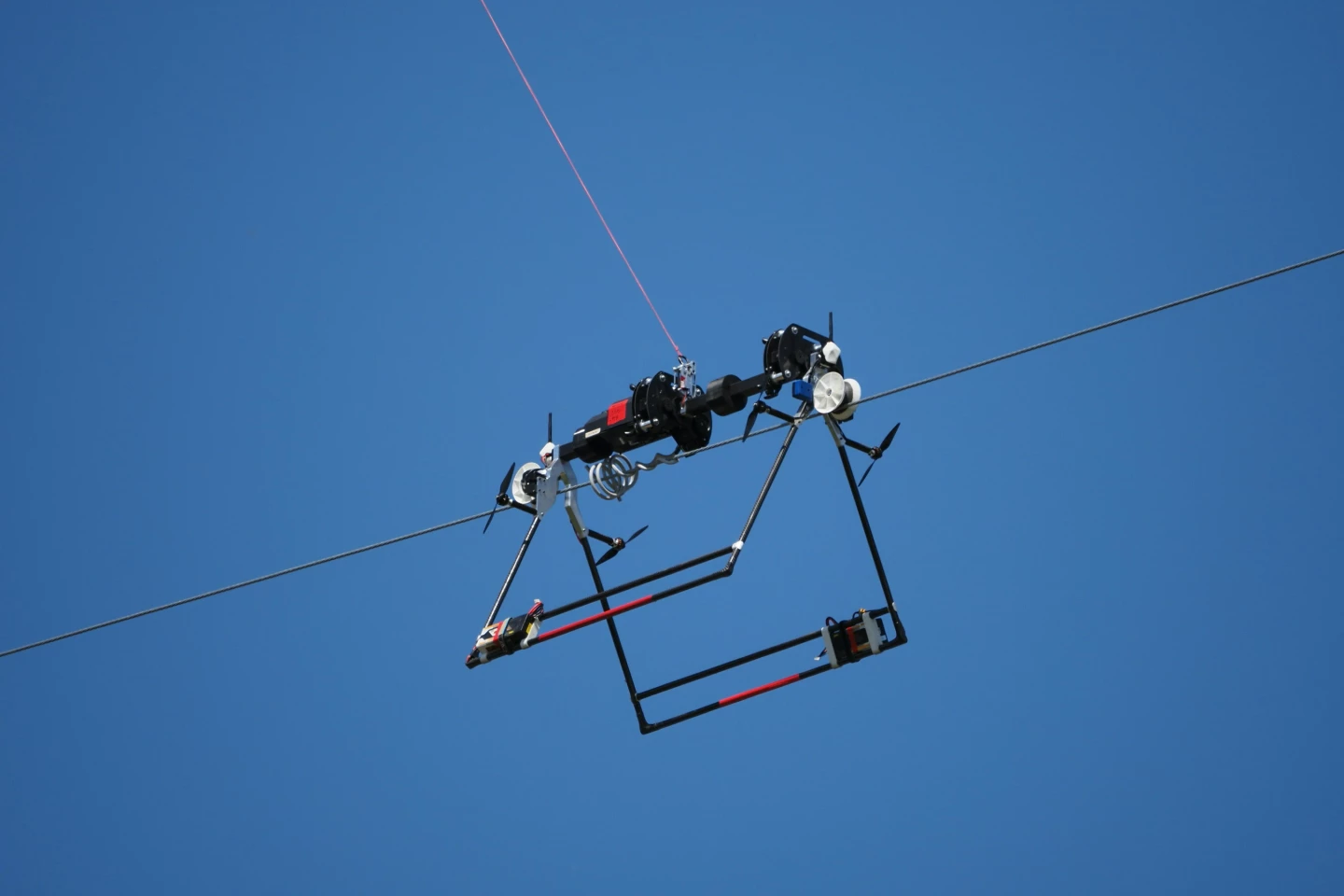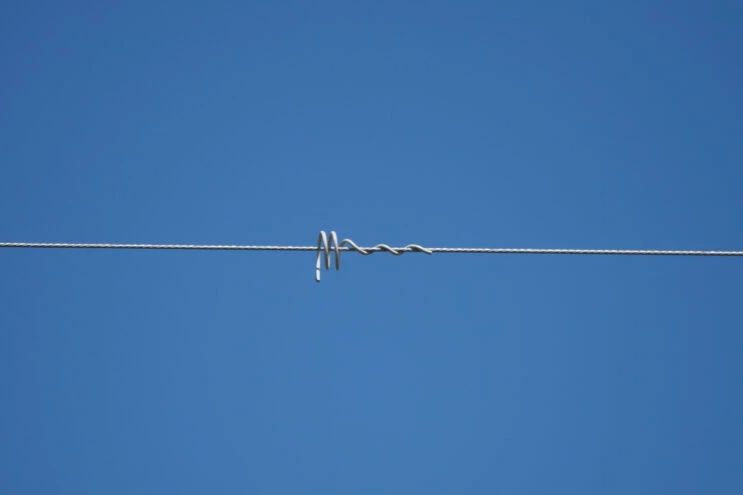It's a sad fact that birds are often killed when they collide with unseen overhead power lines. A new system is designed to keep that from happening, by using a drone and a robot to make those lines more visible.
Announced earlier this month, the setup consists of an E2500 HP coaxial-rotor drone and a Mini LineFly robot – both made by FulcrumAir – along with Bird-Flight Diverter devices manufactured by PLP (Preformed Line Products).
Each of the Diverters takes the form of a coiled length of wire, coated in PVC plastic. Ordinarily, these gadgets are wound and tightened onto power lines by hand, at regularly spaced intervals where they'll be spotted by birds. It's a time-consuming job, and is potentially dangerous for the workers who have to be lifted up to the lines in elevating work platforms.
In the new system, however, the Diverters are applied by the Mini LineFly.

The self-powered robot is lowered down onto a section of power line by the drone, and then makes its way along the length of that section, periodically stopping to the apply Diverters (from an onboard supply) as it goes. Propellers on either side of the robot help keep it from swaying with the line in high winds.
Upon reaching the end of one section, the Mini LineFly is simply lifted back off again by the drone and moved over to the next section. Just two ground-based operators are required, one for the drone and one for the robot.

The system has already been utilized to place nearly 15,000 Bird-Flight Diverters along a 75-mile (121-km) transmission line which is part of the High Banks Wind Project in Kansas. "We are extremely pleased with how the Mini LineFly performed during this demanding project," said FulcrumAir president and CEO, Patrick Arnell.
You can see a demo of the system, in the video below.
For other examples of line-crawling robots, check out the power-line-inspecting LineRanger and the fiber-optic-cable-applying Bombyx.
Source: FulcrumAir via Interesting Engineering





